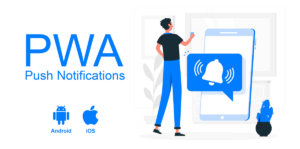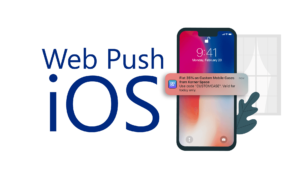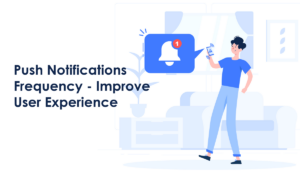Web Push Notifications offer you a direct connection to your customer, especially on mobile devices. Therefore, you have to exercise greater control while sending out notifications when compared to emails and other traditional forms of marketing.
At first, you may be tempted to push each and every offer / content to your subscribers but you need to careful figure out timing as well as frequency. Even though the opt-in rate of push notifications is very high, spamming your subscribers with numerous notifications may result in faster opt-outs or even abandonment of your website. So, to help you get started with Push Notifications, here are some handy tips on what to keep in mind while sending notifications.
Dos and Don’ts of Web Push Notifications
| Recommendation | Dos | Don'ts |
|---|---|---|
| Make is easy to Subscribe | Ask users to subscribe | Make Opt-out Difficult | Highlight Benefits of Subscription | Make the process hassle-free | Create Segments | Create segments based on user characteristics | Send irrelevant notifications to all subscribers | Target Push Notifications to these segments | Take care of Time Zones | Send Push Notification messages based on user's local time | Push messages at the same time for all users | Be Careful about frequency | Figure out a possible schedule for sending notifications | Spam subscribers with too many notifications | Bundle or group multiple notifications | Try changing notification styles | Customize notification styles with different header and relevant images | Just stick to a standard repetitive format | Test Notifications before sending | Check out a preview or demo notification for grammatical errors or spelling mistakes | Be in a haste to send a notification | Study Analytics | Get an idea on Timing | Focus on just sending notifications | Check which notifications get better CTR | Understand subscriber interests | Length of Push Notifications should be Checked | Only send relevant text in notification content | Make notifications very descriptive | A/B Testing | Try different phrases - action words - message lengths | Be scared to experiment |
Easier to Subscribe and Opt-out
Push Notifications have a very high opt-in rate as they don’t require you to give any personal information away. But making this process cumbersome with multiple popups, or redirection will cause user abandonment. This is where PushAlert comes to the rescue, we have a very easy subscription process, just a click and the user gets the option to opt-in. All the while, the user is still on your website. Similarly, the process of opting out of push notifications should be made easier as well. You can try to explain the benefits of staying subscribed but refrain from adding too many steps.
Only send relevant notifications
Create segments for users based on their interests, geographic location and then send relevant notifications to these segments. This would result in higher CTR and will bring more engagement. Moreover, your users will become loyal over time given that you are not spamming them with every piece of content or offer out there. You can also customize the content sent across various segments for a more personalized experience. Sending irrelevant notifications to all subscribers would result in more opt-outs.
Timing is everything
Another thing to take care of while sending notifications is time zones. You don’t want to send a push notification to a customer after work hours, either that may get ignored or else, you will have a very irate customer at your hands. You wouldn’t want to be in either of these situations. So, the easiest way is to create segments based on geolocation which PushAlert does automatically and then send the notification according to the local time of the region.
Don’t Spam!
This is a big NO. You have to prioritize which is the most relevant and important content that needs to be sent through notifications. Every single push notification should add value to the user. If not, it will be considered spam and given that these have a more direct reach with customers, you will see a larger number of people unsubscribing. A few questions that you need to ask before sending any message would be:
- How relevant is this offer/content to the user?
- How many notifications have already been sent?
- Is this similar to a notification that was sent earlier?
- Does this notification add value to make the customer experience better?
Another way to handle multiple notifications is to group them, this can be achieved through RSS Push with PushAlert. If you have an RSS Feed, you can choose the content you want to push, customize the layout and send a link to all the content together. So, instead of sending say, six separate notifications on the best articles of the day, you can combine that in an RSS push. This would be something that the user can just browse through easily and get you higher engagement due to higher visibility.
Don’t be repetitive
This just doesn’t apply to content, but the language used as well as the layout of the notifications. PushAlert allows you to customize the header, the content as well as the icon or image that is sent with the notifications. You can choose a custom image for all notifications or use your default icon given during installation. These minor changes make your notifications more seem more dynamic and feel more personal.
Always preview notifications
You should always preview or test before sending a notification. Check for any grammatical errors, spelling mistakes, header title and message length. Keep the most important text of the notification in the first line.
Observe and analyze metrics
With our Pro Stats you can determine at what time you get the best Click Through Rate (CTR), meaning the timespan when your subscribers are most responsive. You can also see which notifications are fetching a better conversion, to adjust the language and content accordingly. Moreover, this analytics will give you an insight into user behavior and interests.
A/B Testing
This is an indispensable tool to find out what works best for your subscribers. PushAlert’s A/B Notifications can determine the notification which would fetch more engagement and higher conversion. With A/B testing a subset of your subscribers is chosen, then a part of that is sent one notification while the other gets a similar notification with the content, title or image altered. Then PushAlert will automatically analyze which notification is fetching a better conversion and send that to the rest of your subscribers. This experiment fetches better CTR and also gives an understanding of user interests.
If you remember these few fundamentals when sending out push notifications, you will never falter. Always be ready to experiment and be patient. As your subscriber base grows, so will your insight into what works for them.


